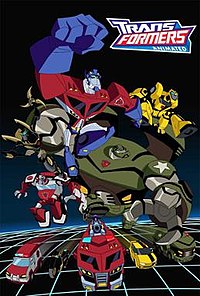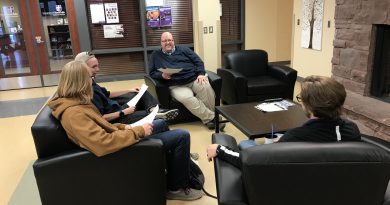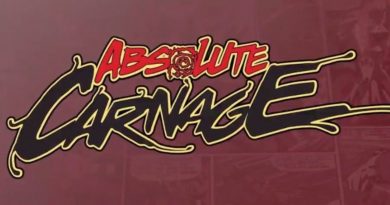Comics Cornerstone TV Spotlight: Transforming the Transformers for the 21st Century
Image Courtesy of Cartoon Network and Hasbro
Salutations, readers! Welcome back to another TV Spotlight edition of Comics Cornerstone! I hope everyone is managing to retain their sanity during this strange time of social distancing. I know it isn’t easy, but something tells me that the light at the end of the tunnel is edging ever closer. Call it a hunch. Before we get too far into today’s post, a little housekeeping. In about a month or less, Comics Cornerstone is going to be moving over to a private blog site. Why? Because, at the end of this current semester, I’ll no longer be part of The Vessel writing team. After three semesters, I felt like it was time to move on to greener pastures. With that said, there will probably be a couple more posts on this site before the move. Just keep an eye out for the announcement for when the move officially happens. Though I do sincerely hope that you’ll all follow me over to the new site. With that out of the way, today’s review is all about one of the best cartoons of the early 2000s: “Transformers Animated”! Not only was it one of the best cartoons of the time, it’s maybe one of the best Transformers shows ever. So, let’s see how it holds up.
“Transformers Animated” ran from 2007 to 2009 on Cartoon Network and was the first Transformers show of the 2000s’ that wasn’t a primarily Japanese production. The first three Transformers shows of the century were actually produced first in Japan and then followed up by a US dub. The thesis of “Animated” was to reinvent the mythos so that it was appealing for all demographics without feeling like a retread for fans familiar with the original series. Many fan-favorite characters were present, with the Autobot roster consisting of Optimus Prime, Bumblebee, Ratchet, Prowl, and Bulkhead, while the Decepticon team included characters like Megatron, Starscream, Lugnut, Blitzwing, and Black Arachnia.
Many of the aforementioned characters were already established, though “Animated” presented them in astonishing new ways. The most notable change was the fact that the main Autobot cast were not soldiers, but rather a lowly maintenance crew who stumble into heroism after finding the legendary Allspark and being forced to protect it from Megatron. After narrowly beating the Decepticon leader, the team crashes on Earth and wake up 50 years later in a futuristic version of Detroit. In this technological utopia, androids have replaced humans in basic jobs such as reporters, food vendors, sanitation workers, education, and retail. A frighteningly realistic depiction of what could one day come to pass. The audience will soon discover that all these advancements are the result of reverse-engineered Cybertronian technology. As it turns out, an upstart inventor named Isaac Sundaac discovered the disembodied head of Megatron after he fell from space and uses it as the basis for his creations.
At first glance, the show might seem aimed mostly at children due to its humor and animation style. Though if you watch it for long enough you’ll see the very grownup themes displayed throughout. Things like fear, betrayal, loss, and even PTSD were commonly explored throughout the show’s lifespan. Those aren’t things you’d typically find in a kid’s show at the time, but Transformers is almost always the perfect medium to explore these things. Sure, little kids won’t really care about or notice this stuff, but the idea was to appeal to fans of all ages and thus, the darker elements. Though I wouldn’t be surprised if a 9-year-old watched it now for the first time and was utterly terrified by Megatron. Voice actor Corey Burton delivers a bone-chilling performance that makes him sound cruel and calculating rather than the ego-maniacal warlord of the 80’s cartoon. Even hearing it now sends chills up my spine.
One of the most tragic episodes of the series was the Season 1 episode “Along Came A Spider” in which Prime deals with a figure from his past returning to haunt him. The episode takes place during the Autobot’s first Halloween on Earth and involves Optimus flashing back to an incident from his military days where he and two of his comrades are attacked by giant spiders which have infested a Decepticon warship. During the battle, the ship begins to explode and Optimus makes the difficult decision to leave his teammate, Elita One, to her fate. During a present-day altercation with Black Arachnia, it’s revealed that Elita was infected with the spider’s venom and mutated into the half-machine, half-organic villain. Feeling abandoned, Arachnia aligns herself with the Decepticons on her quest for revenge and a cure. Unfortunately for her, her feelings for Optimus ultimately prevent her from killing the Autobot leader, though she will never trust him again. And that’s just one example of the mature thematic elements that the show brought to screens. Not to mention the fact that Black Arachnia will scare the pants off of any child watching.
The show would go on to introduce many new and fan-favorite characters, many of whom were given fresh origins to match the tone and style of the series. For example, Autobot twins Jetfire and Jetstorm, were introduced as young hotshot members of the Elite Guard with the ability to combine. Though the Elite Guard often clashed with Prime’s team, they would eventually put aside their differences to defend Earth from the dual threat of Megatron and an Allspark-powered Starscream.
What would become arguably the most interesting element of the show is the human companion Sari Sumdaac. As the daughter of Isaac Sumdaac, Sari possesses a unique connection to the machines and is even granted an Allspark-powered key with the power to repair, upgrade, or give life to all technological devices. Though the true nature of her connection would remain a secret for the first two seasons, the final season would answer all the burning questions from the last two years.
When all is said and done, “Transformers Animated” is quite possibly the most unique Transformers show ever made. Sure, it has its’ flaws. But the good far outweighs the bad because of the consistent quality of the animation and the uniformity between the writers and directors. And the fact that the voice acting is top-notch is just icing on the cake! It’s a shame that it was canceled after three seasons. Thankfully, it had probably the best finale of any Transformers cartoon to date. A fourth season was planned, but it only saw the light of day via a TFcon Toronto exclusive graphic novel. As far as what the rest of us saw on our screens, “Transformers Animated” was like nothing that came before or after and was truly more than meets the eye!
So, that about does it for today! I hope you enjoyed it. The show was and remains a highlight of my fandom and I hope you’ll give it a chance if you haven’t already. As for what’s coming next, there will be lots of special posts on here and on the new site once the move happens because comics still aren’t coming out. But don’t worry because there will still be plenty of awesome content! So until then, stay safe, stay healthy, and stay comical.






